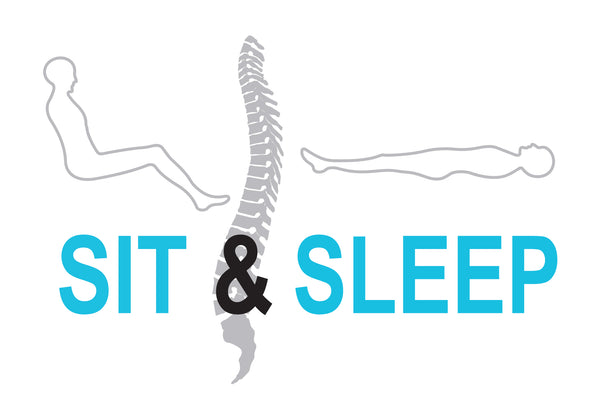Ergonomic sleeping
Ergonomic sleep products
-

Slatted bases
An ergonomic slatted base that can be personally adjusted to your specific...
-

Mattresses
An ergonomic mattress tailored to your comfort.
-

Box springs
A good box spring is a box spring that can be customised...
-

Bed frames
A good bed can also be a beautiful bed. So create your...
-

Fitted sheets
Use a stretch fitted sheet to maintain the comfort of the mattress...
-

Mattress protectors
A good mattress protector is well-ventilated and has a slightly thicker weave...
Does your sleep system meet the 4 most important characteristics of healthy sleep?
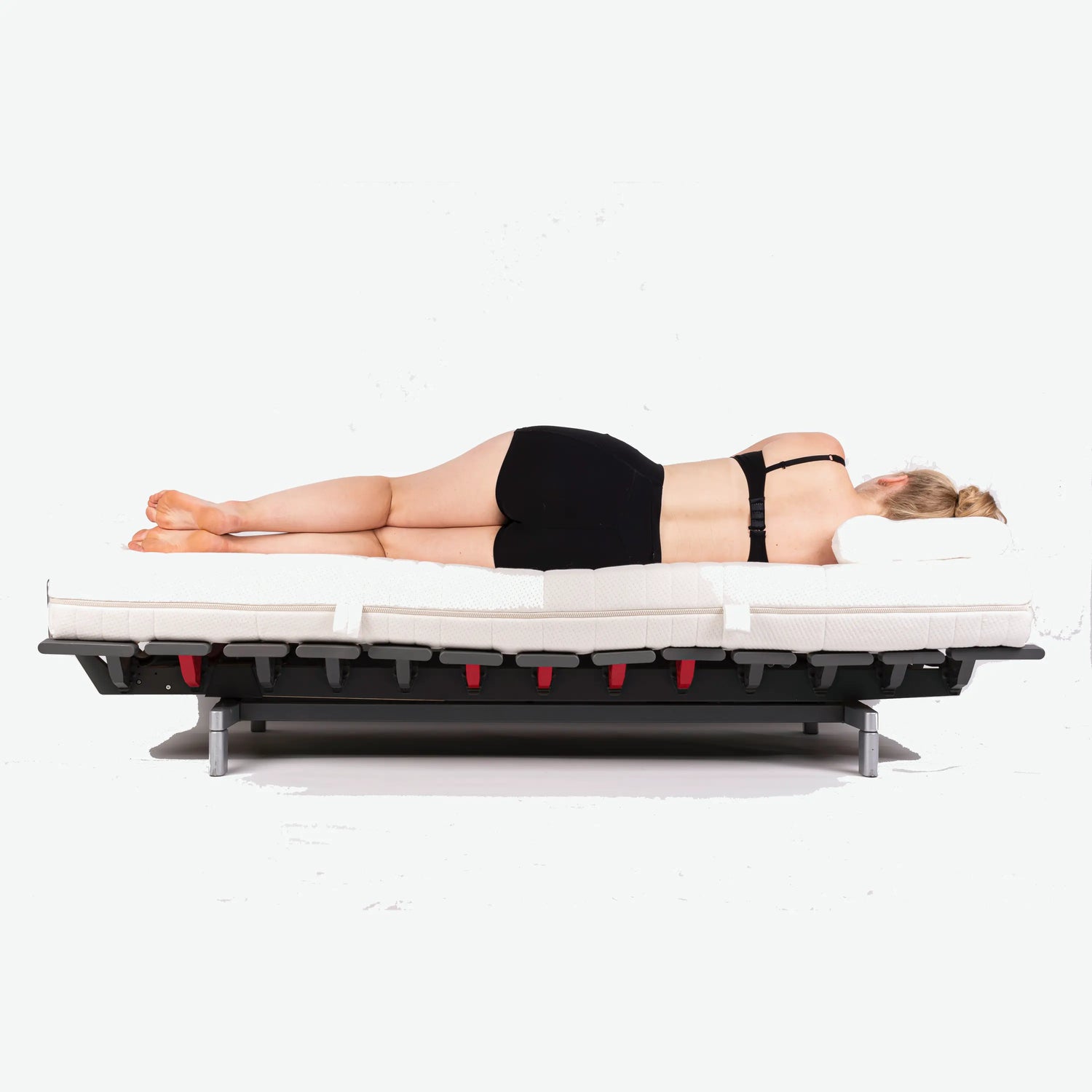
1. A correct spinal position
While you sleep, it's important that your back remains in a neutral position so it can recover optimally and experience minimal strain. Intervertebral discs act like sponges between your vertebrae and need space to absorb fluid and recover from the stresses of the day. A neutral position means you maintain the natural S-curve of your spine when lying on your back. Viewed from the back, your spine should generally form a straight line, with all the vertebrae aligned. Sleeping on your stomach is less beneficial, as it often causes a hollow lower back and a twisting of the spine, especially in the cervical vertebrae.
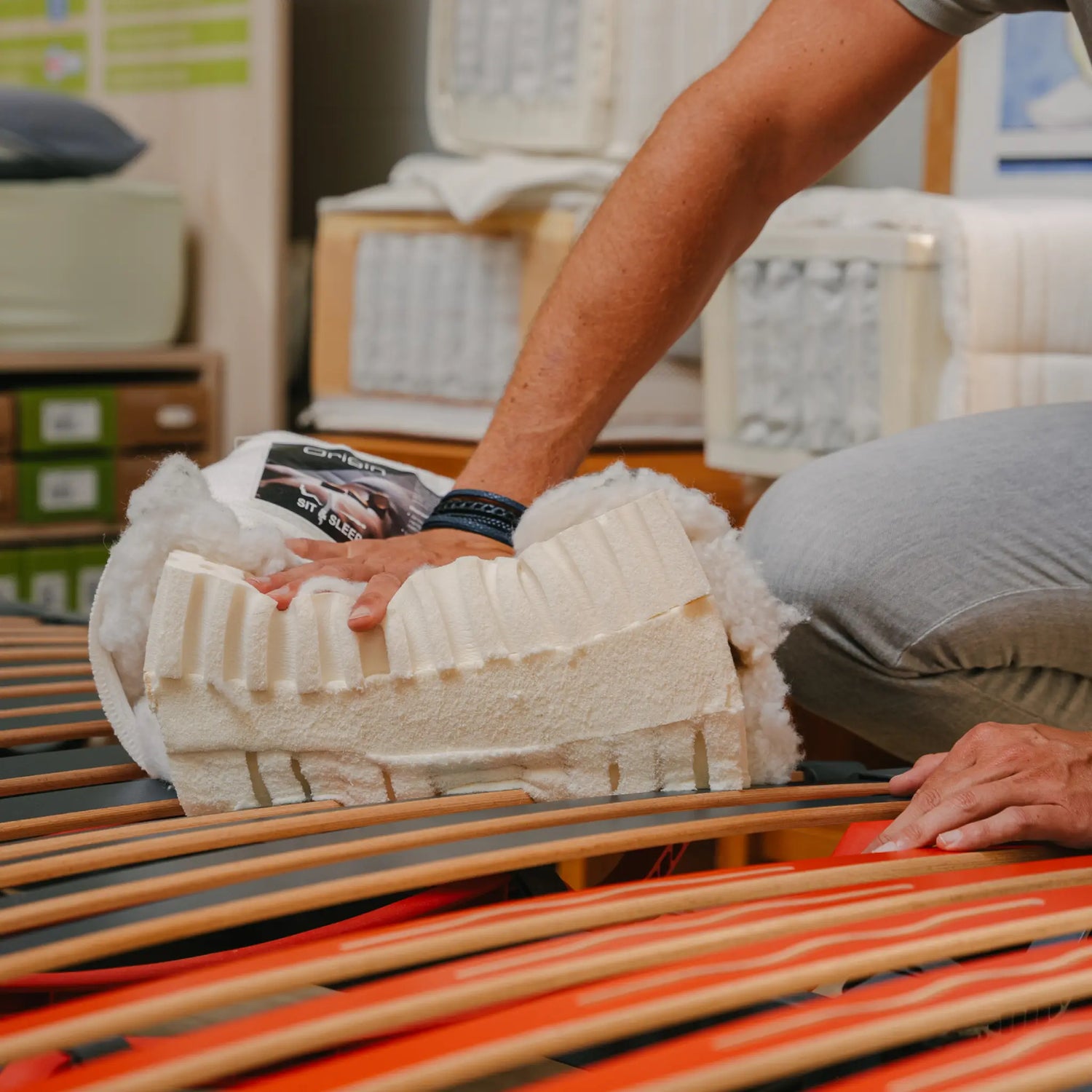
2. Optimal pressure distribution
For a correct spinal alignment, you could theoretically lie on a firm surface, but this would be uncomfortable due to the pressure on protruding parts such as the shoulders and pelvis. A sleep system that is too firm can lead to complaints such as morning stiffness or a numb arm. Therefore, it's important to minimize pressure on skin, muscle, and nerve tissue. This can be achieved by distributing the pressure over a larger surface area with a soft top layer. Latex, for example, is an excellent material for extra comfort on a well-adjustable slatted base.
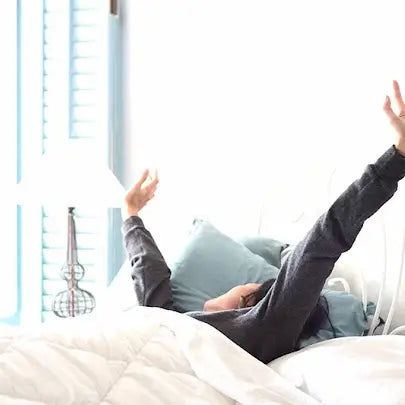
3. Movement
Movement during sleep has three important functions: it stimulates blood flow to the muscles, prevents prolonged peak pressure, and promotes rehydration of the intervertebral discs. A good sleep system should make it easy to change positions. Overly soft mattresses, such as a waterbed or memory foam, can hinder this. On the other hand, a surface that is too hard can lead to restless sleep due to excessive movement. A good balance of firmness is therefore essential for a healthy night's sleep.

4. Sleeping climate
Temperature and humidity play a major role in the quality of your sleep. The right materials in your sleep system act as natural air conditioning. A dry and comfortable sleeping environment promotes a good night's sleep. That's why we use materials that both insulate and ventilate, such as cotton or viscose mattress covers combined with absorbent fibers like merino wool or camel hair, and cool fibers like wild silk. The foam layers also need to be well-ventilated; latex foam is suitable for this, while memory foam is less so.
Hard or soft sleep?
-

A soft bed?
A bed that's too soft causes an unnatural curvature of the spine, causing the pelvis to sink too deeply and compressing the discs in the lower back. This also puts stress on muscles, ligaments, and joint capsules, both in the side and supine position. Furthermore, a sleep system that's too soft restricts natural freedom of movement during sleep.
-

A hard bed?
When sleeping on your side or back, an unnatural curvature of the spine develops when the waist is insufficiently supported and the shoulders and pelvis experience excessive pressure. This leads to poor circulation, pain in the shoulders, hips, and ribs, and restless sleep. This often results in a semi-prone or full-prone sleeping position, which is not a good sleeping position.
-

A good bed!
A good sleep system combines firm and soft zones in the right places, with a firm zone around the pelvis to accommodate weight and a soft zone at the shoulders for optimal comfort. The waist needs extra firm support, as this is where it requires the most support. The exact firmness should always be tailored to the sleeper's body characteristics.
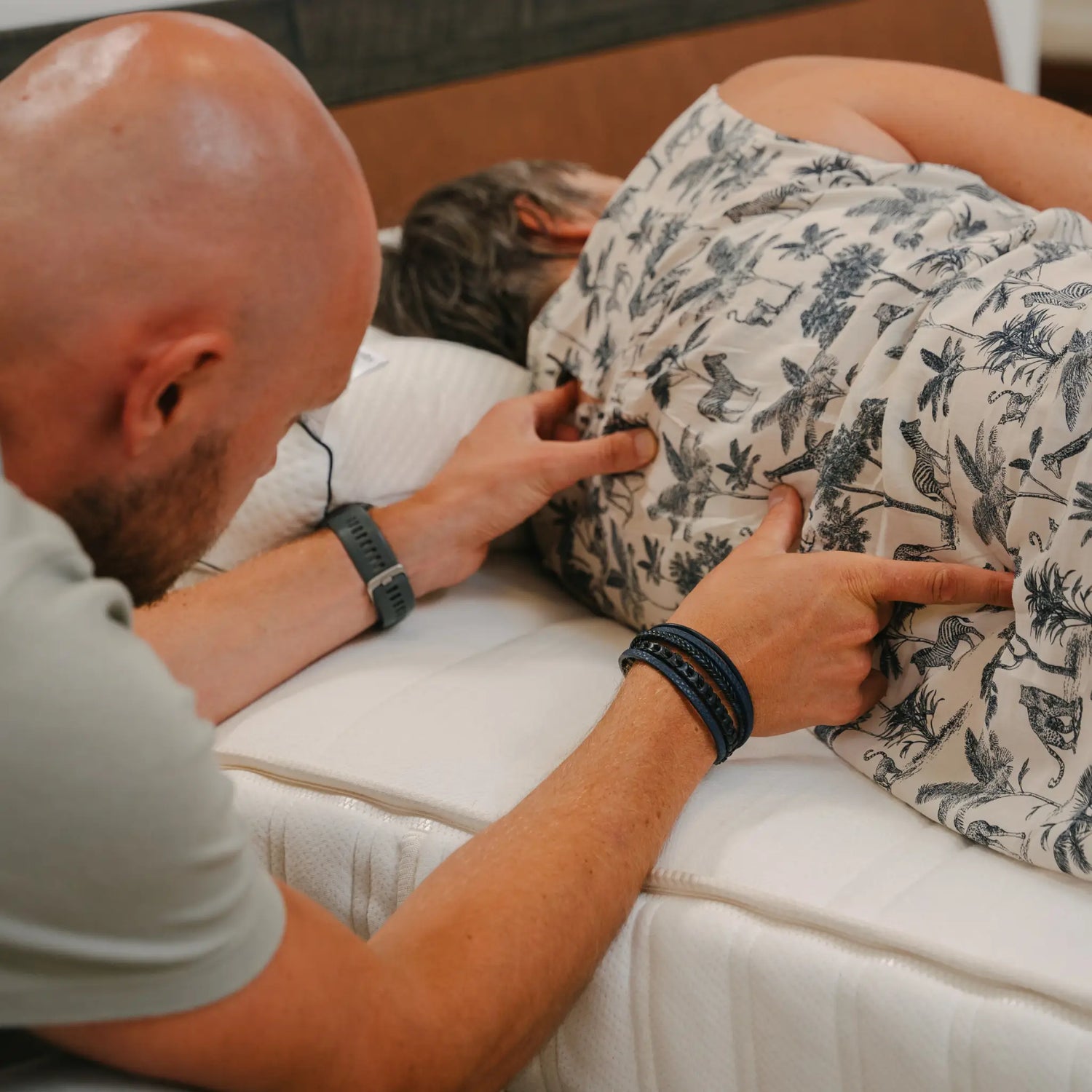
Professional sleep advice tailored to your needs
Our physiotherapists and ergonomic consultants are happy to provide you with sound advice on which sleep system offers the best solution for your back and neck pain, or how to prevent them. We work objectively by manually checking the position of your spine.
